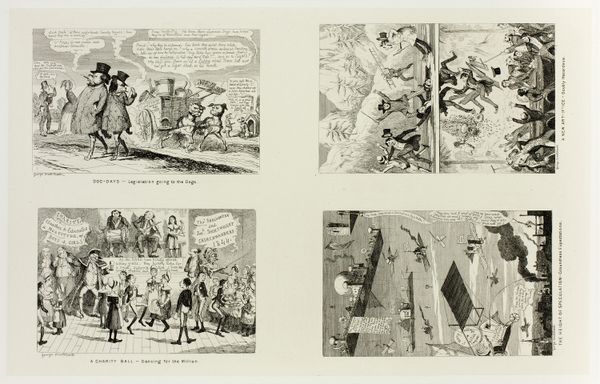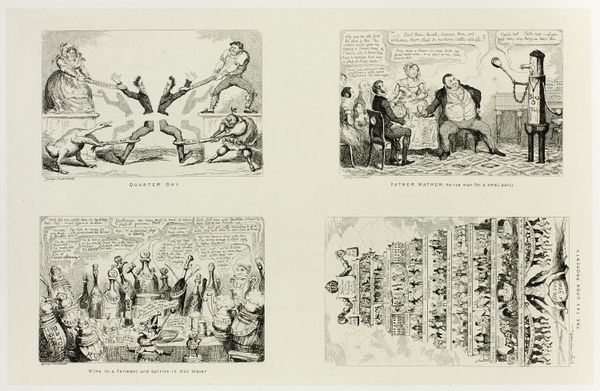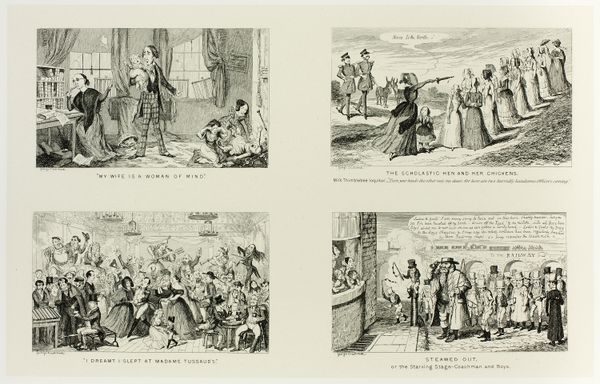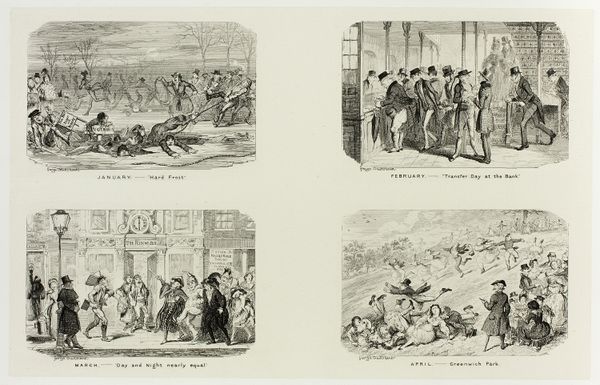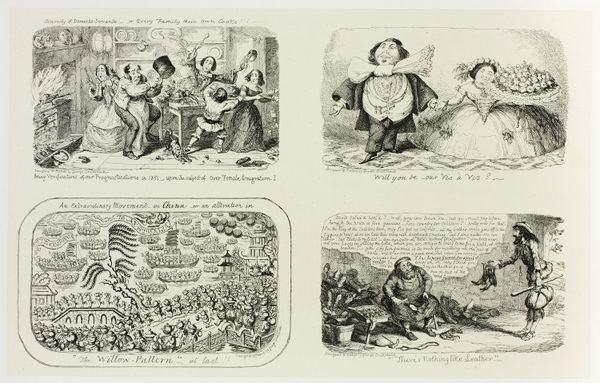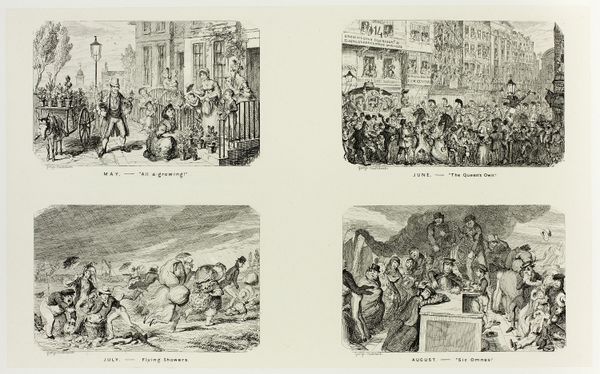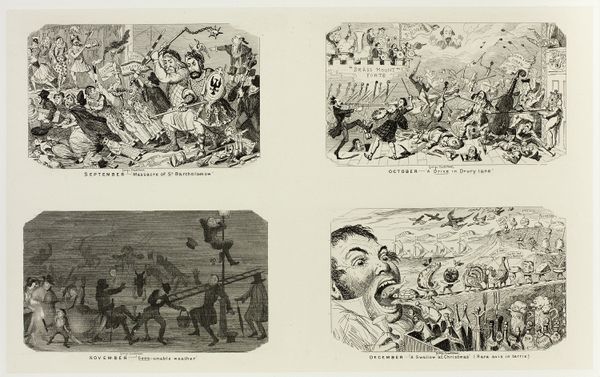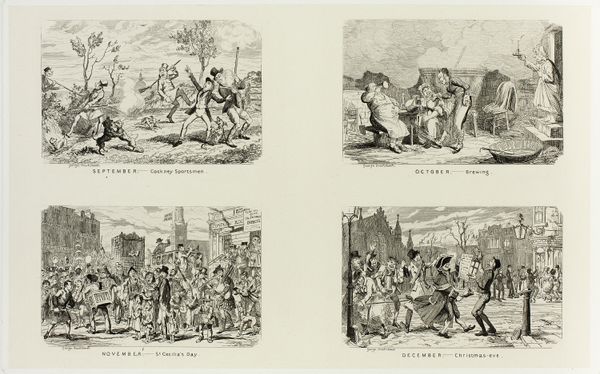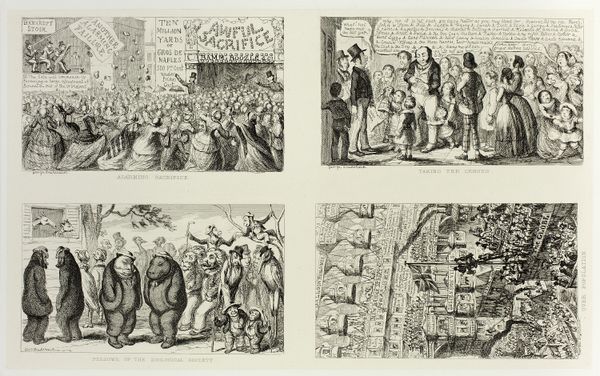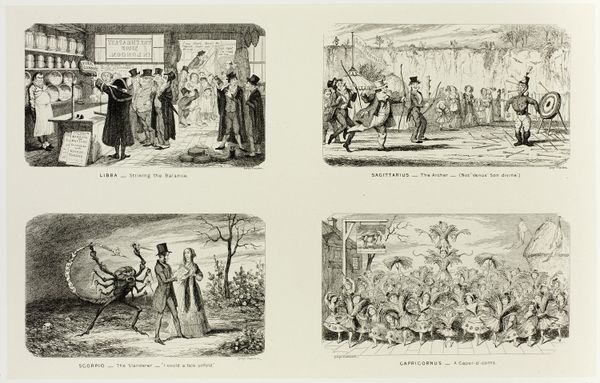
The Sick Goose and the Council of Health from George Cruikshank's Steel Etchings to The Comic Almanacks: 1835-1853 (top left) c. 1847 - 1880
0:00
0:00
drawing, print, etching, paper
#
drawing
#
comic strip sketch
# print
#
pen sketch
#
etching
#
pencil sketch
#
paper
#
personal sketchbook
#
sketchwork
#
ink drawing experimentation
#
england
#
pen-ink sketch
#
sketchbook drawing
#
storyboard and sketchbook work
#
sketchbook art
Dimensions: 208 × 335 mm (primary support); 344 × 505 mm (secondary support)
Copyright: Public Domain
Editor: Alright, let’s look at this print, “The Sick Goose and the Council of Health,” part of George Cruikshank's "Comic Almanacks," dating roughly from 1847 to 1880. It depicts a rather large, ill-looking goose being attended to by what seems like skeletal doctors. The mood is definitely satirical. What do you see as the most interesting aspect of this piece? Curator: I'm struck by how Cruikshank uses caricature to comment on public health and institutional power. Think about it: in the 19th century, anxieties surrounding health, particularly infectious diseases, were pervasive. He positions these skeletal figures – stand-ins for doctors or maybe even the government – as ineffectual, even ghoulish. Editor: So you see this more as a statement about the system rather than the individual sickness? Curator: Exactly. Consider the historical context: The Poor Law Amendment Act of 1834 had just reshaped social welfare. This image might critique the perceived coldness and inadequacy of these new systems in caring for the vulnerable – symbolized by the "sick goose." Cruikshank’s work was often overtly political. The "Comic Almanacks" weren't just for laughs. Editor: It is true the figures don't exactly inspire confidence... their height exaggerates the scene. Curator: Note, too, how he renders the "goose," right? Its size and placement make it feel monumental, but helpless. In visual art, how are those themes made socio-political in public spaces? The use of such stark imagery had significant social implications during a period defined by social and political tension in England. How might that have impacted viewers at the time? Editor: This really does turn it into more than just a funny drawing. I hadn't considered how the artwork connected to the issues present in English Society at that point in time. Curator: Precisely! By delving into the historical backdrop, we uncover the satire's sharp edge and the artist's broader commentary on Victorian society.
Comments
No comments
Be the first to comment and join the conversation on the ultimate creative platform.
